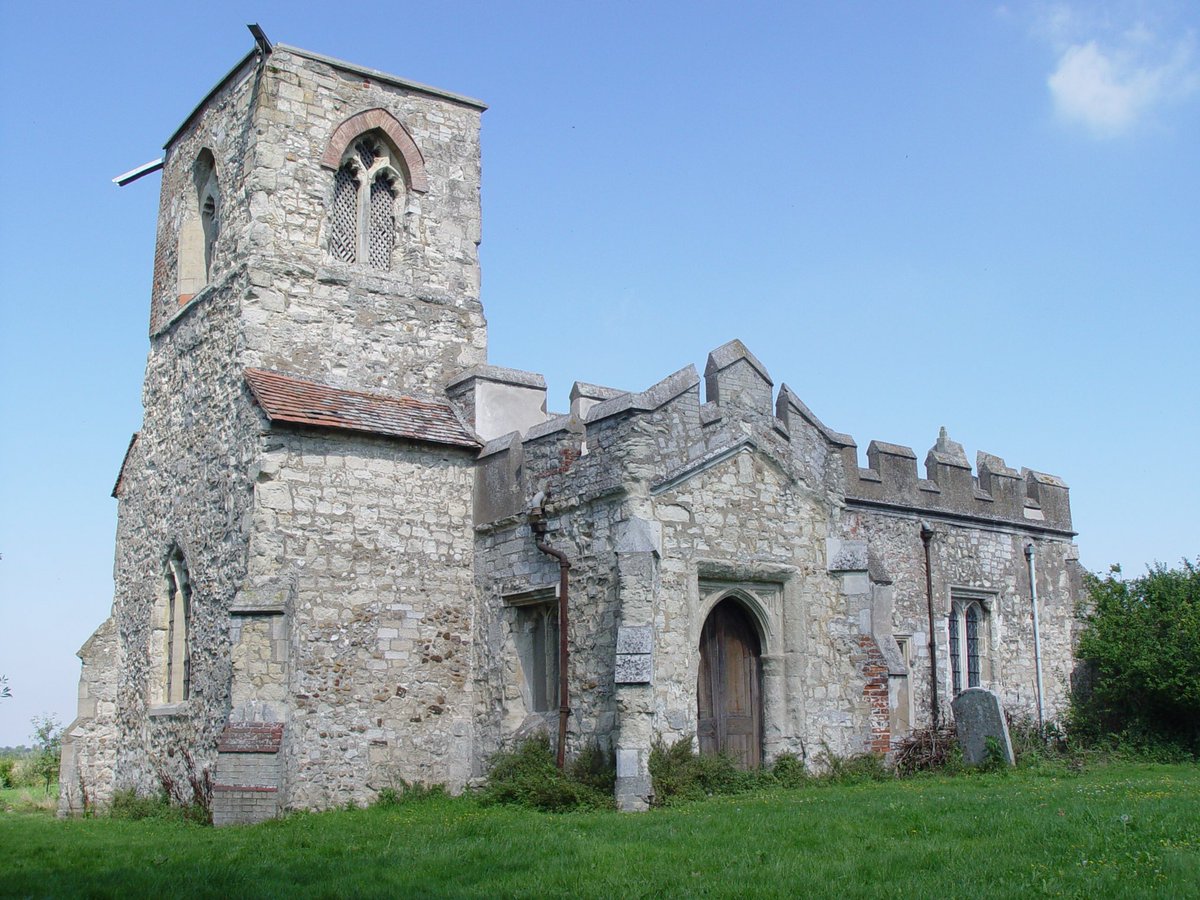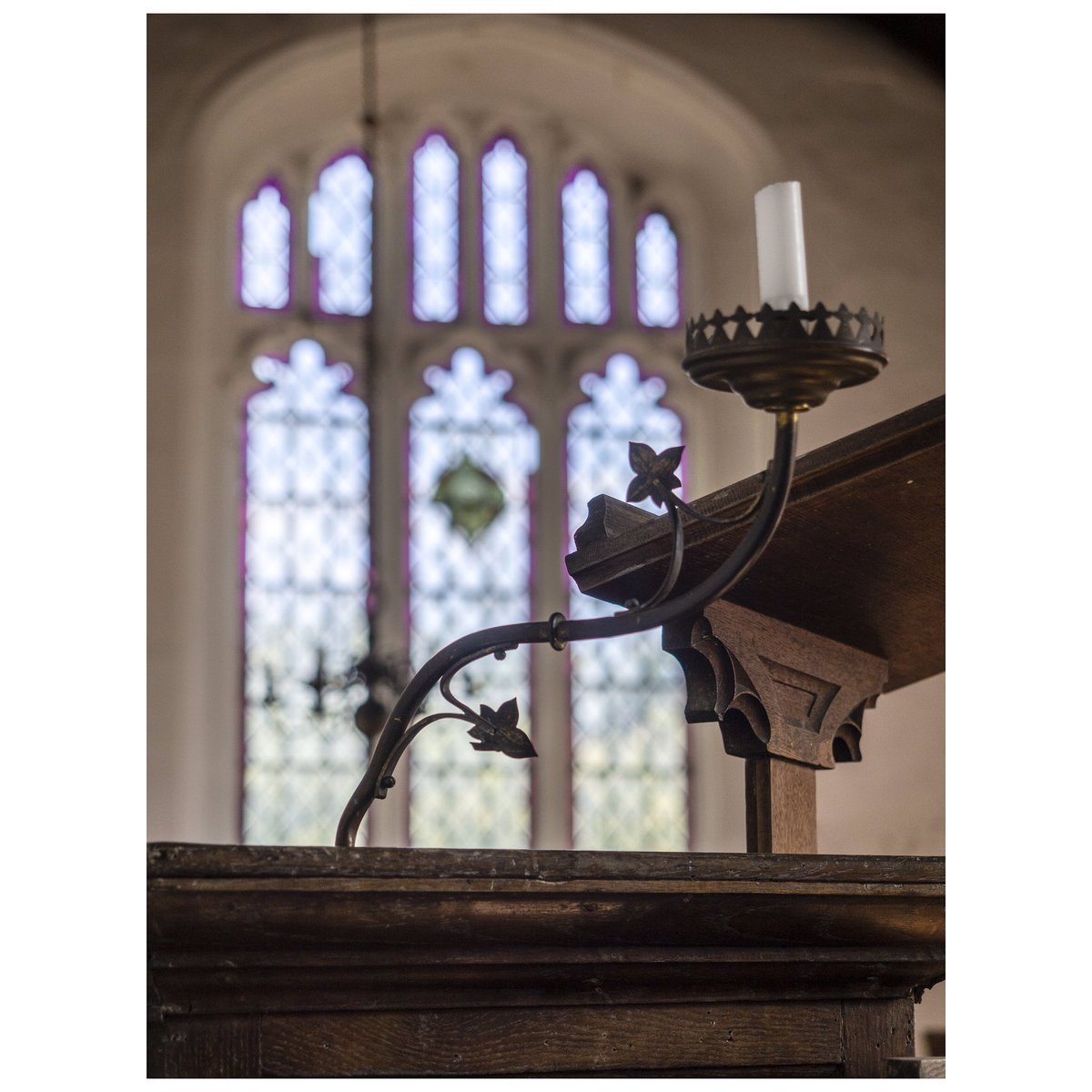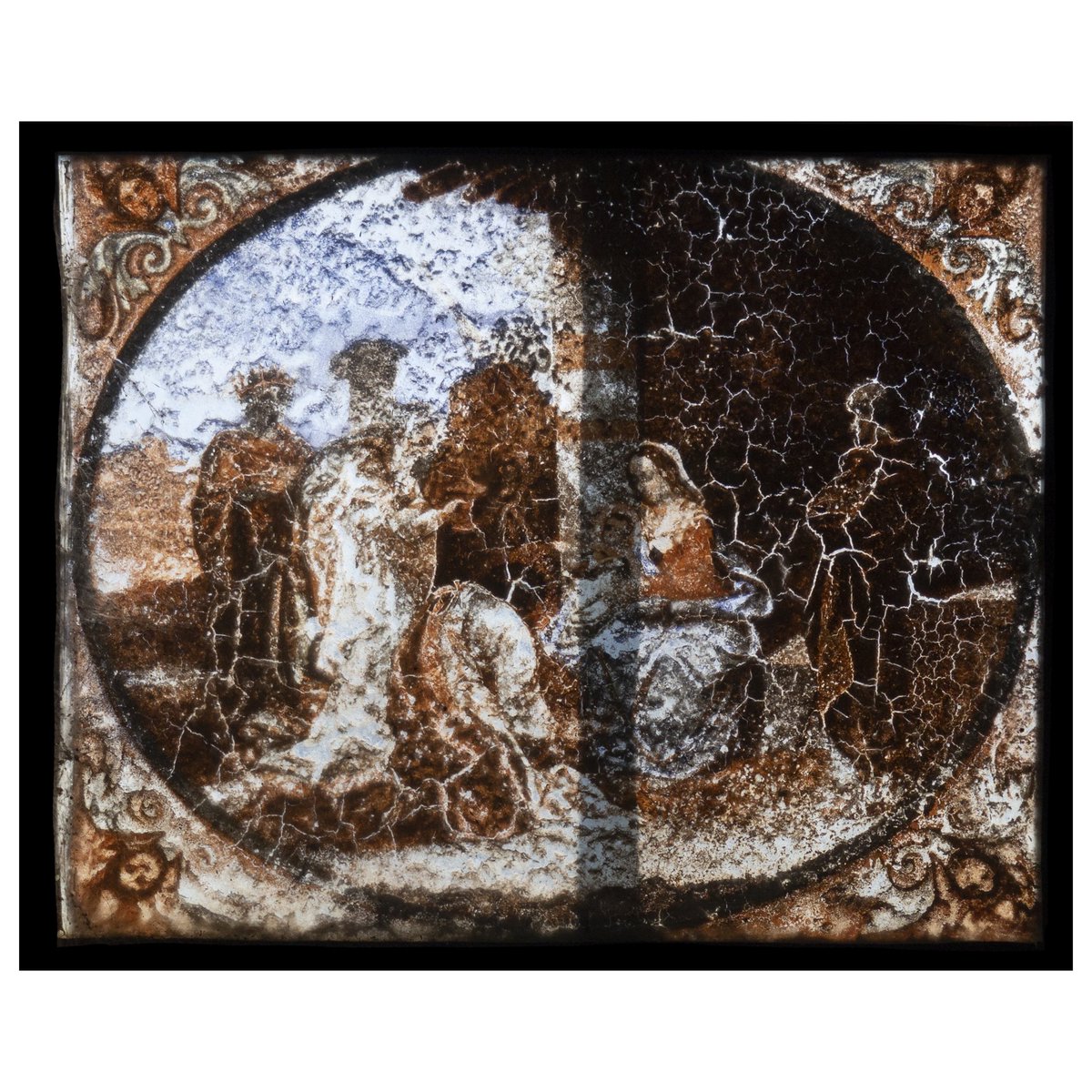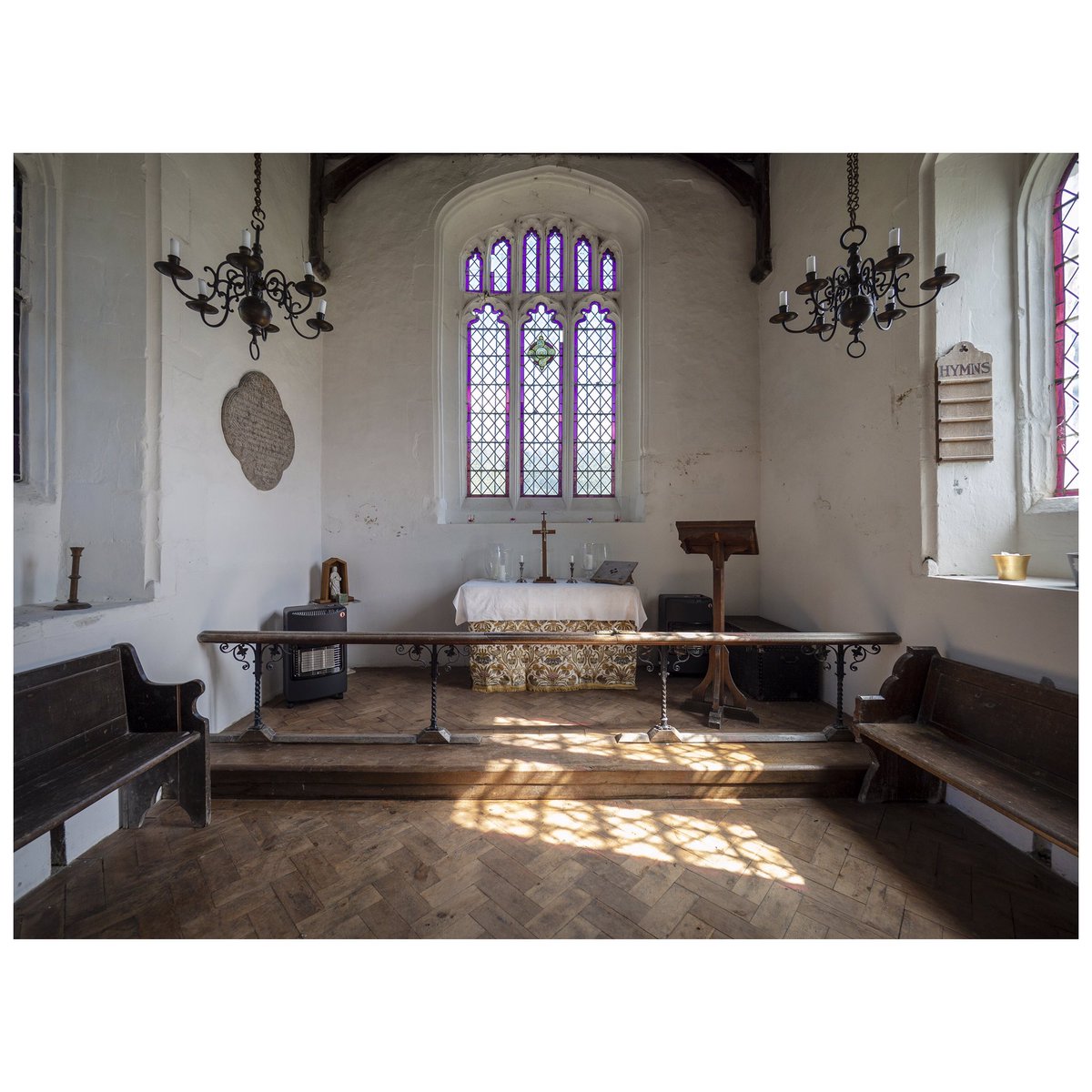The diminutive St Mary Magdalene’s is a weather-beaten majesty. Externally, it’s a patchwork of nibbled clunch, brick, the odd flint nugget, and islands of lime render. Its design incorporates embattled parapets, cinquefoil tracery, and a rather regal south porch.
#thread
#thread
But the most intriguing part of this Hertfordshire church is one of the southeast windows. Twelve roundels depict scenes from the Life of Christ. But this isn’t stained or painted glass. It’s something I have never seen in a church before… glass transfer painting.
2/7
2/7
Glass transfer painting was fashionable in the 18th century as the printing industry boomed. The process involved imparting a print on to a sheet of glass by coating the glass with turpentine, pressing the print onto surface of the glass and smoothing with a rolling pin.
3/7
3/7
The glass with print adhered was then allowed to completely dry. The print was then gently rubbed with a wet finger until the paper dissolved and the print ink remained bound in the turpentine varnish to the surface of the glass. The print can then be coloured in oil paint.
4/7
4/7
The process was popular with ladies of the aristocracy in the 18th century, when prints were widely available and relatively cheap, and the colouring in required, well … less skill, but achieved attractive results.
5/7
5/7
However, I think it’s unusual to find this transfer glass in windows. This has led to the deterioration of the paintings at Caldecote church. As an organic varnish, turpentine will deteriorate over time – it can crack, yellow, chalk…
6/7
6/7
Here at Caldecote, the paint and varnish experience condensation, varying relative humidities, sunlight, heating, cooling …None of which are good for paint (or glass) and all of which exacerbate the deterioration.
7/7
Huge thanks to @badger_beard for the photos in this thread.
7/7
Huge thanks to @badger_beard for the photos in this thread.

 Read on Twitter
Read on Twitter






